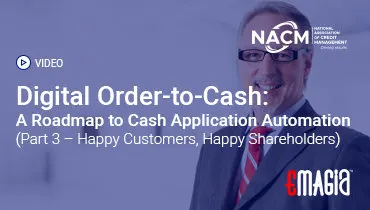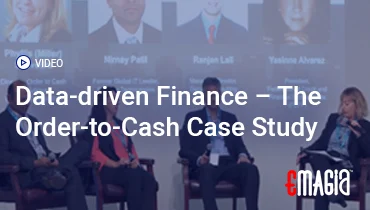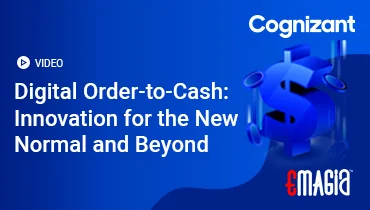The restaurant industry, a vibrant and essential part of our economy, has always thrived on speed, efficiency, and exceptional customer service. However, behind the scenes, managing the flow of money—from the moment a customer places an order to the final collection and reconciliation of payment—can be incredibly complex. This entire financial journey is encapsulated by the Order-to-Cash (O2C) process, a critical cycle that directly impacts a restaurant’s profitability, operational efficiency, and ability to scale.
Historically, many restaurants have relied on traditional, often manual, methods for their O2C operations. Think handwritten order pads, cash registers, and manual reconciliation of daily sales. While these methods sufficed for decades, the modern culinary landscape, characterized by diverse ordering channels (dine-in, takeout, delivery), evolving payment preferences, and fierce competition, demands a more sophisticated approach. The old ways are simply too slow, too prone to error, and too inefficient to keep pace with today’s demands.
This is why restaurants are actively upgrading their o2c process, embracing innovative technologies and streamlined workflows to optimize every step of their order to cash cycle. From digital order management to automated payment processing and intelligent inventory control, these upgrades are not just about convenience; they are about unlocking financial precision, enhancing customer experience, and building a more resilient and profitable business model. This comprehensive guide will explore how restaurants are upgrading their O2C processes, detailing the key areas of transformation and the profound benefits they are realizing.
Demystifying the Restaurant O2C Process: What is Order-to-Cash?
Before diving into the upgrades, let’s clarify what is order to cash process in the context of a restaurant. The O2C process, or Order-to-Cash cycle, represents the complete journey of a customer’s order from its inception to the final receipt of payment and its accurate recording in the restaurant’s books. Understanding what is O2C is crucial for identifying areas for improvement.
Defining the Stages of the Restaurant Order-to-Cash Cycle
While the core concept of order to cash remains consistent across industries, its application in restaurants has unique nuances. The typical stages include:
- Order Placement: A customer places an order (e.g., through a waiter, online platform, phone call). This is the very beginning of the otc cycle.
- Order Management: The order is received, processed, and communicated to the kitchen or bar. This involves ensuring accuracy and managing queues.
- Order Fulfillment: The food or drink is prepared and delivered to the customer (dine-in, takeout, or delivery).
- Billing/Invoicing: A bill is generated for the customer. For catering or large events, this might be a formal invoice. Understanding what is billing here is key.
- Payment Collection: The customer makes the payment. This can be cash, card, or digital.
- Cash Application & Reconciliation: The received payment is matched against the bill, recorded in the accounting system, and reconciled with bank deposits.
- Reporting & Analytics: Analyzing sales data, payment trends, and operational efficiency.
This entire flow, from the customer’s decision to order to the cash landing in the bank, is what O2C means for a restaurant. The o2c full form clearly highlights the journey from the initial order to the final cash received.
Traditional O2C Challenges in Restaurants: Why Upgrades Are Essential
For years, restaurants grappled with inherent inefficiencies in their traditional o2c process. These challenges, often stemming from manual operations and disconnected systems, directly impacted profitability and customer satisfaction.
1. Inefficient Order Taking and Management
Reliance on manual order pads, verbal communication to the kitchen, and fragmented systems led to:
- Order Errors: Misheard orders, incorrect modifications, or forgotten items, leading to food waste and customer dissatisfaction.
- Slow Service: Manual order entry and communication created bottlenecks, especially during peak hours, impacting table turnover and customer wait times.
- Lack of Data: No digital record of order details for analysis, making it hard to track popular items or peak times.
These issues directly affect the initial phase of the order to cash cycle.
2. Payment Processing Bottlenecks and Limited Options
Traditional payment methods, predominantly cash and physical card terminals, presented their own set of problems:
- Slow Checkout: Waiting for physical card machines, manual tip entry, and printing multiple slips slowed down the payment process.
- Cash Handling Risks: Increased risk of theft, errors in change, and time spent on cash counting and bank deposits.
- Limited Customer Convenience: Customers increasingly expect diverse payment options, including mobile wallets and online payments, which traditional setups often lacked.
- Reconciliation Headaches: Manual matching of cash and card slips to daily sales reports was time-consuming and error-prone.
These inefficiencies directly impacted the “cash” part of the order to cash equation.
3. Disconnected Inventory and Supply Chain Management
Many restaurants managed inventory with spreadsheets or even pen and paper, leading to:
- Stockouts and Waste: Inaccurate inventory counts resulted in running out of popular ingredients or excessive spoilage of perishable goods.
- Inefficient Ordering: Manual tracking made it difficult to optimize purchasing, leading to higher food costs and missed supplier discounts.
- Lack of Cost Control: Without real-time data, understanding the true cost of dishes and managing supplier payments was challenging.
While not strictly part of the otc billing process, these indirectly impact the profitability of each order.
4. Manual Billing and Accounts Receivable (for B2B)
For restaurants offering catering, events, or corporate accounts, the B2B otc process faced specific challenges:
- Manual Invoice Creation: Generating invoices for large events was often a manual, time-consuming process, prone to errors.
- Delayed Collections: Tracking outstanding balances and sending reminders was often reactive, leading to extended Days Sales Outstanding (DSO) and cash flow issues. This is where otc collections became a pain point.
- Lack of Visibility: Difficulty in getting a clear, real-time picture of outstanding receivables.
These issues highlight why a comprehensive understanding of what is the order to cash process is vital for all revenue streams.
Revolutionizing the Restaurant O2C: How Restaurants Are Upgrading Their O2C Processes
The modern restaurant is leveraging technology to transform every stage of its order to cash cycle, moving towards a more automated, integrated, and data-driven approach. These upgrades are fundamentally changing how restaurants are upgrading their O2C processes.
1. Enhanced Order Management: Digitalizing the Start of the Cycle
The first step in the order to cash cycle is order placement. Restaurants are upgrading this by:
- Online Ordering Platforms: Implementing branded websites and mobile apps for direct online orders, reducing reliance on third-party aggregators and improving profit margins. This streamlines the initial “order” part of order to cash.
- Integrated POS Systems: Modern Point-of-Sale (POS) systems are central to the new O2C. They allow for seamless order entry (via tablets, handheld devices, or self-service kiosks), direct communication to the kitchen display systems (KDS), and real-time inventory updates. This eliminates manual order pads and reduces errors.
- Table-Side Ordering: Waitstaff use handheld devices to take orders directly at the table, which are then sent instantly to the kitchen, improving accuracy and speed of service.
- QR Code Ordering: Customers scan a QR code at their table to view menus and place orders directly from their smartphones, enhancing convenience and reducing staff workload.
These advancements ensure that the “order” part of o2c meaning is efficient and accurate.
2. Streamlined Payment Processing: Accelerating the “Cash” Flow
The payment collection stage is undergoing a significant overhaul to accelerate cash flow:
- Integrated Payment Gateways: POS systems are now seamlessly integrated with payment processors, allowing for quick and secure processing of credit/debit cards, mobile wallets (Apple Pay, Google Pay), and contactless payments.
- Mobile POS and Pay-at-Table Solutions: Handheld devices allow staff to process payments directly at the table, reducing wait times and improving customer experience.
- Online Payment Options: For online orders, secure payment gateways allow customers to pay upfront, ensuring faster cash realization.
- Digital Wallets and Loyalty Programs: Integration with digital wallets and loyalty programs streamlines payment and enhances customer engagement, contributing to a smoother otc cycle.
- Automated Cash Reconciliation: Payments are automatically matched and reconciled with sales data in the POS and accounting systems, significantly reducing manual effort and errors in cash application.
These innovations address the core of what is order to cash by optimizing the payment collection and reconciliation.
3. Automated Inventory and Supply Chain Management
While not direct O2C, efficient inventory management directly impacts profitability per order. Restaurants are upgrading by:
- Real-time Inventory Tracking: Integrated systems provide live updates on ingredient levels, preventing stockouts and reducing waste.
- Automated Reordering: Systems can automatically generate purchase orders to suppliers when stock levels hit predefined minimums, optimizing inventory turnover and ensuring ingredients are always available for new orders.
- Supplier Integration: Direct electronic communication with suppliers for faster ordering and better price negotiation.
- Recipe Costing & Variance Analysis: Tools within the system to accurately calculate dish costs and identify discrepancies between theoretical and actual food usage, leading to better cost control.
This ensures that the cost side of the order to cash cycle is tightly managed.
4. Efficient Invoicing and Billing (Especially for B2B Services)
For restaurants with catering, events, or corporate accounts, the otc billing process is being transformed:
- Automated Invoice Generation: Systems automatically create detailed invoices for catering events or corporate clients based on order details, reducing manual errors and speeding up the billing process.
- Digital Invoice Delivery: Invoices are sent electronically via email or customer portals, ensuring prompt delivery and reducing postage costs.
- Customizable Billing Cycles: Flexibility to set up recurring billing for subscription-based services or installment payments for large events. This directly addresses what is billing in a B2B context.
These upgrades ensure that the billing phase of order to cash is streamlined and accurate.
5. Improved Accounts Receivable and OTC Collections (for B2B)
For outstanding B2B balances, restaurants are adopting more proactive strategies:
- Automated Payment Reminders: Systems automatically send polite reminders to clients before and after invoice due dates, reducing the need for manual follow-ups.
- Customer Payment Portals: Secure online portals allow corporate clients to view their invoices, make payments, and track their payment history independently, enhancing convenience and accelerating collections.
- Dispute Management: Centralized platforms to track and resolve billing disputes efficiently, preventing delays in payment.
- Automated Cash Application: As discussed, intelligent systems automatically match incoming payments to invoices, reducing unapplied cash and improving reconciliation accuracy.
These advancements in otc collections significantly reduce Days Sales Outstanding (DSO) and improve cash flow for the restaurant’s B2B operations.
6. Leveraging Data Analytics and Business Intelligence
Beyond automating individual steps, restaurants are using data to gain deeper insights into their o2c process:
- Real-time Sales Reporting: Dashboards provide immediate insights into sales performance, peak hours, popular menu items, and average check sizes.
- Customer Behavior Analysis: Tracking order history, payment preferences, and loyalty program engagement to personalize offers and improve customer retention.
- Operational Performance Metrics: Analyzing order accuracy rates, speed of service, and payment processing times to identify bottlenecks and areas for continuous improvement.
- Cash Flow Forecasting: More accurate and real-time data from the entire order to cash cycle enables better forecasting of cash inflows, aiding in financial planning.
This data-driven approach transforms raw information into actionable intelligence, allowing restaurants to make smarter business decisions.
7. Enhancing Customer Experience Through Digital O2C
Ultimately, all these O2C upgrades contribute to a superior customer experience:
- Faster, More Accurate Service: Digital order taking and kitchen communication lead to fewer errors and quicker meal delivery.
- Convenient Payment Options: Offering diverse and seamless payment methods aligns with customer preferences.
- Transparency: Customers can track their orders (for delivery) and access their billing history easily.
- Personalized Engagement: Data insights allow for tailored promotions and loyalty rewards, fostering stronger customer relationships.
A smooth order to cash journey translates directly into happier, more loyal customers.
The Impact of Upgraded O2C Processes on Restaurant Success
The shift towards modernized o2c process in restaurants is yielding significant benefits that are crucial for long-term success in a competitive industry.
- Improved Cash Flow: Faster payment processing, reduced billing errors, and efficient collections directly accelerate the conversion of sales into cash, improving liquidity.
- Reduced Operational Costs: Automation minimizes manual labor, reduces errors, and optimizes inventory, leading to significant savings on wages, food waste, and administrative overhead.
- Enhanced Accuracy: Digital systems drastically reduce human error in order taking, billing, and cash application, ensuring financial records are precise and reliable.
- Greater Efficiency and Speed: Streamlined workflows mean faster service, quicker table turnover, and expedited financial reporting, allowing restaurants to handle higher volumes.
- Better Customer Satisfaction: A seamless and convenient order to cash cycle leads to happier customers, fostering loyalty and positive reviews, which are invaluable in the service industry.
- Scalability for Growth: Automated systems can easily handle increased demand, new locations, or expanded service offerings without a proportional increase in manual effort, enabling sustainable growth.
- Strategic Insights: Real-time data and analytics empower management to make informed decisions on menu pricing, staffing, marketing, and expansion strategies.
These transformations are not just about keeping up with trends; they are about building a more resilient, profitable, and customer-centric restaurant business.
How Emagia Helps Enterprises with Order-to-Cash Automation
While restaurants primarily deal with high-volume B2C transactions, large restaurant chains or hospitality groups with significant B2B operations (e.g., catering, corporate accounts, franchise management) face similar Order-to-Cash complexities as other large enterprises. This is where Emagia, a leader in AI-powered Order-to-Cash (O2C) automation, provides a transformative solution that can elevate their financial operations.
Emagia’s platform is designed to automate and optimize the entire order to cash cycle for complex enterprise environments, directly addressing the pain points that even large restaurant groups might face in their B2B revenue streams. For instance, Emagia’s AI-powered cash application module can intelligently match high volumes of diverse payments (including checks, ACH, and wire transfers from corporate clients) to outstanding invoices with unparalleled accuracy, significantly reducing manual reconciliation effort and accelerating cash flow. This is crucial for managing the “cash” part of the o2c process for large-scale operations.
Beyond cash application, Emagia’s comprehensive suite streamlines credit management, ensuring consistent credit policies for corporate clients and mitigating bad debt risk. Its intelligent invoicing capabilities automate the generation and delivery of complex invoices for large catering events or recurring corporate contracts, minimizing errors and speeding up the otc billing process. Furthermore, Emagia’s advanced otc collections features leverage AI to prioritize collection efforts, personalize communication, and automate dunning strategies, leading to improved collection rates and reduced Days Sales Outstanding (DSO) for B2B receivables. By providing real-time, end-to-end visibility and powerful analytics across the entire order to cash cycle, Emagia empowers finance teams within large restaurant groups to move from reactive problem-solving to proactive, strategic financial management, ensuring optimal cash flow and profitability from their B2B operations.
Frequently Asked Questions (FAQs)
What is the Order-to-Cash process in a restaurant?
The Order-to-Cash process (O2C) in a restaurant covers the entire journey from when a customer places an order until the payment for that order is collected, reconciled, and recorded. It includes order taking, kitchen communication, food delivery, billing, payment processing, and cash application.
What is O2C and what is OTC process?
O2C stands for Order-to-Cash, and OTC process is a common abbreviation for the same. Both terms refer to the comprehensive cycle of managing customer orders and converting them into revenue, encompassing all steps from initial order placement to final payment collection and accounting.
How are restaurants upgrading their O2C processes for efficiency?
Restaurants are upgrading their O2C processes by implementing integrated POS systems, online ordering platforms, mobile payment solutions, and automated inventory management. These technologies streamline order taking, accelerate payment processing, reduce manual errors, and provide real-time data for better decision-making, optimizing the entire order to cash cycle.
What is billing in the context of a restaurant’s O2C?
Billing in a restaurant’s O2C context refers to the generation of a bill or invoice for the customer after the order has been fulfilled. For dine-in, it’s typically a printed check. For catering or corporate accounts, it involves creating a formal invoice. Efficient billing is crucial for timely payment collection in the otc billing process.
How do digital payments improve the restaurant order to cash cycle?
Digital payments (e.g., mobile wallets, contactless cards, online payments) significantly improve the order to cash cycle by accelerating payment collection, reducing cash handling risks, and simplifying reconciliation. They offer greater convenience to customers and provide immediate transaction data for faster cash application.
What does O2C means for a restaurant’s profitability?
O2C means direct impact on a restaurant’s profitability. An optimized O2C process leads to faster cash flow, reduced operational costs (less manual labor, less waste), fewer errors, and improved customer satisfaction. This translates into higher revenue recognition and better financial health.
What are OTC collections in the restaurant industry?
OTC collections in the restaurant industry primarily refer to the process of recovering outstanding payments from business-to-business (B2B) clients, such as corporate accounts for catering or event services. This involves tracking overdue invoices, sending reminders, and managing disputes to ensure timely payment and reduce Days Sales Outstanding (DSO).
Conclusion: The Digital Transformation of the Restaurant Order-to-Cash Cycle
The restaurant industry is undergoing a profound transformation, driven by the imperative to enhance efficiency, improve cash flow, and deliver exceptional customer experiences. At the core of this evolution is the strategic upgrade of the Order-to-Cash (O2C) process. By moving away from outdated manual methods and embracing integrated digital solutions, restaurants are fundamentally reshaping how they manage their financial operations.
From the moment an order is placed through advanced POS systems and online platforms, to the seamless processing of digital payments and the intelligent management of inventory and B2B receivables, every step of the order to cash cycle is being optimized. These upgrades are not just about adopting new technologies; they are about fostering a culture of precision, speed, and data-driven decision-making. The result is a more resilient, profitable, and customer-centric business model that can thrive in today’s competitive and dynamic market. For any restaurant looking to secure its future, investing in the modernization of its o2c process is no longer an option, but a vital strategic imperative.



